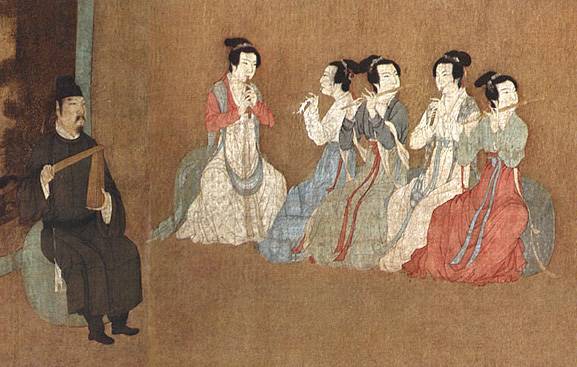Hanfu - History and Facts about Hanfu
Hanfu (meaning clothing of the Han people) is a name for pre-17th century traditional clothing of the Han Chinese, which are the predominant ethnic group of China. Hanfu appeared in China more than three thousand years ago and is said that it was clothing of the legendary Yellow Emperor, a great sage king of ancient China. The basic of Hanfu was developed in time of Shang Dynasty, from 1600BC to 1000BC. Hanfu consisted of a yi, a narrow-cuffed, knee-length tunic tied with a sash, and a narrow, ankle-length skirt, called chang, worn with a bixi, a length of fabric that reached the knees. They were made of silk and painted in red and green. From the first appearing Han-Chinese clothing had changed and evolved with the fashion.
With the beginning of Western Zhou Dynasty hanfu begins to be method of distinction between classes. Height of one’s rank influenced the level of decoration of a dress, length of a skirt and the wideness of a sleeve. Sleeves were also made wider than in the time of the Shang Dynasty and yi tunic is also closed with jade decorations or with a sash tied around the waist. The collar were crossed and tied to the right while skirts and trousers varied in length from knee-length to ground-length.

Eastern Zhou Dynasty invented shenyi - "the deep robe", which is a combination of tunic and skirt. It was cut separately but sewn as a piece of clothing with left side of the costume shaped into a corner which was used for closing the shenyi by fastening on the chest. Shenyi could be worn by anybody regardless of gender, profession or social class. Technology was advanced enough at the time that many complicated and magnificent patterns appeared on Hanfu.
A complete Hanfu garment developed in time with addition of other parts of clothing. Now, it is considered that it consists of several pieces of clothing: Yi - which is any open cross-collar garment and is worn by both men and women; Pao - any closed full-body garment, it is worn only by men; Ru- open shirt with cross-collar; Shan - open cross-collar shirt or jacket which is worn over the yi; Qun or chang -a type of skirt which is worn by both women and men and Ku - a type of trousers or pants. It is also considered traditional to decorate hanfu with tassels and jade pendants or various ornaments hung from the belt or sash, which are known as pei. Hats for men and hairpieces for women could also be traditionally worn in combination with Hanfu. This headwear also marked profession or social rank.
Hanfu disappeared at the beginning of the Qing Dynasty (1644-1911) which was founded, not by Han Chinese who form the majority of the population of China, but by the Manchus, a semi-nomadic people which first rose to prominence in Manchuria. Qing Dynasty fell in 1911 and Manchu dress disappeared quickly in favor of western-style dress. Most of the Han Chinese wear western-style clothing today and hanfu is worn rarely. The hanfu is now worn during some festivals, ritualistic ceremonies (such are coming of age or rite of passage), by historical re-enactors and by monks and priests.
